A couple miles out of Delta, Utah, we passed this shoe tree. Ouest thought it was pretty cool, and gathered up any shoes she could find on the ground with laces on them. It became my duty to hang all of them back up again.
More mountains, more overheating. It just becomes impossible to keep this thing cool when climbing these mountain passes that go on for miles and miles. The bus is just moving too slow to move any air over the radiator. It also doesn’t help that I haven’t gotten a proper replacement for the coolant expansion tank. Instead I’ve been using plastic jugs, which work up to a point, and then they either break, or the pressure pops the caps off—at which point coolant starts pissing out, the engine heats up even more, and we have no choice but to spend more quality time on the side of the road. It’s really not a big deal, but it does become rather comical when you do the math and figure out our average speed for the day, which is about fifteen to twenty miles an hour whenever mountains are involved.
Lowe napped right through this stop.
Straight as an arrow. When you come down off a mountain in western Utah or anywhere in Nevada this is the sight you are met with. One long straight road connecting one range to another. The crazy thing is that you can’t even begin to judge the distance. You think it’s maybe ten miles off, but then you drive ten miles and it still looks like you haven’t gotten any closer. Fifteen minutes later you’re still plugging along. Then another fifteen. And then you realize the road isn’t going downhill anymore, that it’s climbing. And another fifteen minutes goes by. I don’t know how bicyclists do it, but they’re out here in all their craziness.
We bedded down for the night in Baker, Nevada. A tiny town with a vaguely artsy feel given off by the handful of residents.
This morning we visited the Lehman Caves. Ali and I aren’t much into caves, but we’ve reached that point that we need to be good parents and give these experiences to our kids. And even if we wouldn’t have gotten much enjoyment out of a guided tour of a cave by ourselves, we get plenty of enjoyment out of it through the kids’ eyes. So yeah, it was a cave, and it was sort of pretty in its own way, and it is amazing to think that it probably took some of these stalactites millions of years to reach the floor, and now the kids know what a stalactite is—so our job here is done.
From there we drove west on the Loneliest Highway, where we climbed more mountains very slowly. Tomorrow we’ll climb aboard a steam train in Ely, because at least one of us—the smallest one—likes trains very much.
And for no particular reason, here are some pics of the kids’ room right before bed. The blackout shades come off during the day, as does the room divider curtain.
For about half an hour before bed, after washing up, the kids have quiet time. Ouest usually picks out the books that we’ll read that night, and then sits around “reading” them herself until it’s time for all of us to gather in the room. Meanwhile, Lowe is in the living room playing with his cars, concentrating intensely on whatever driving scenario he happens to be acting out.

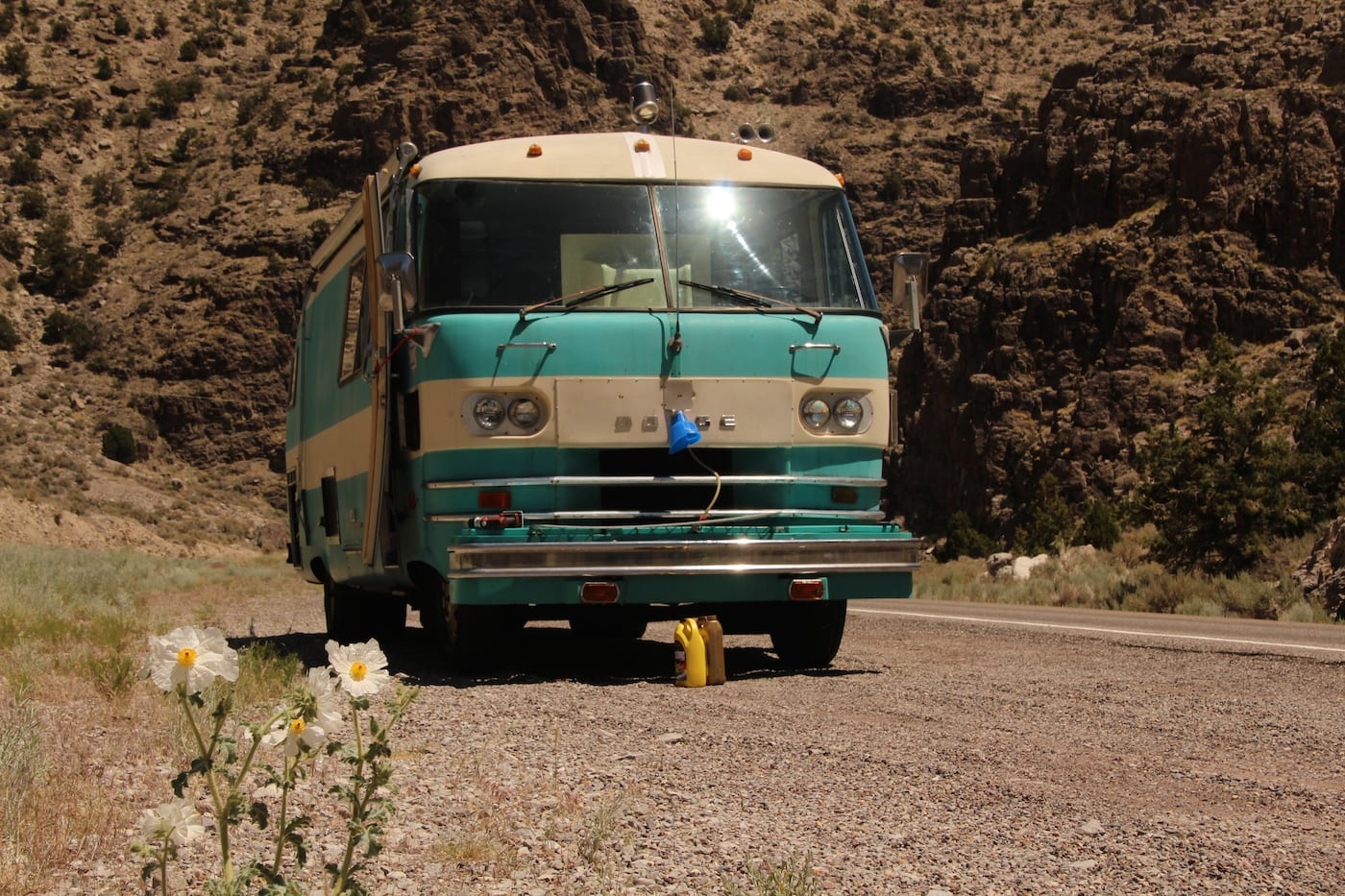
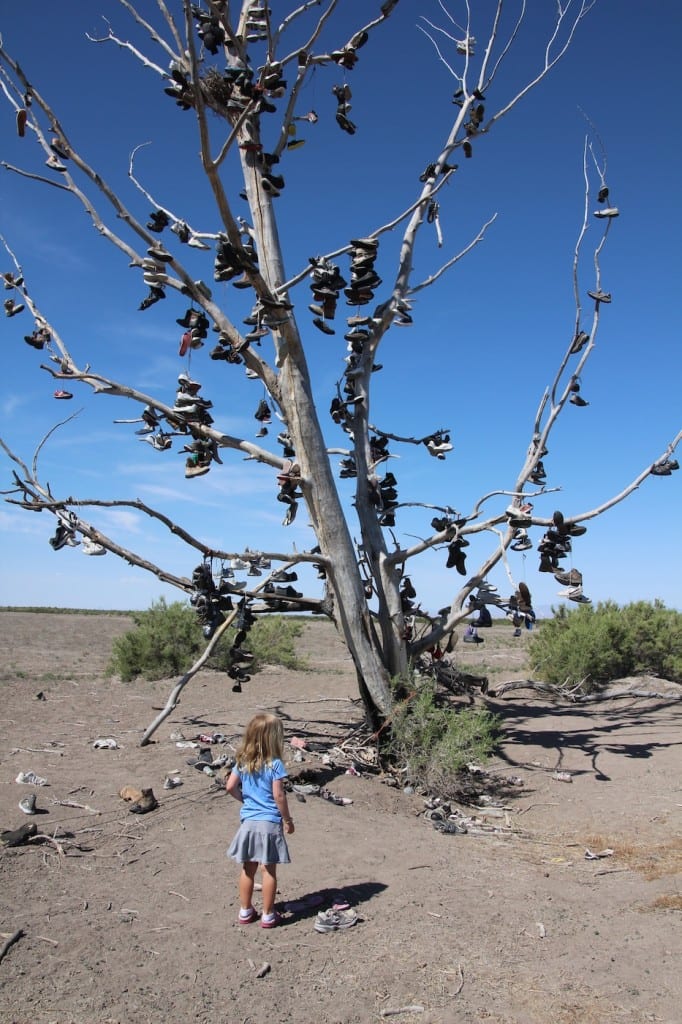
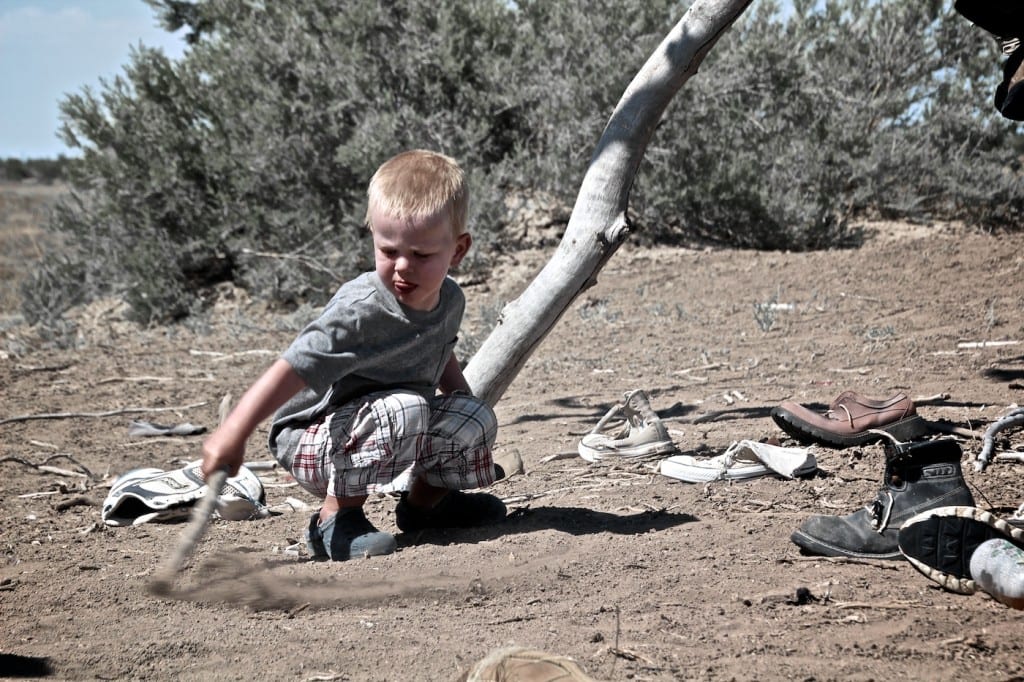

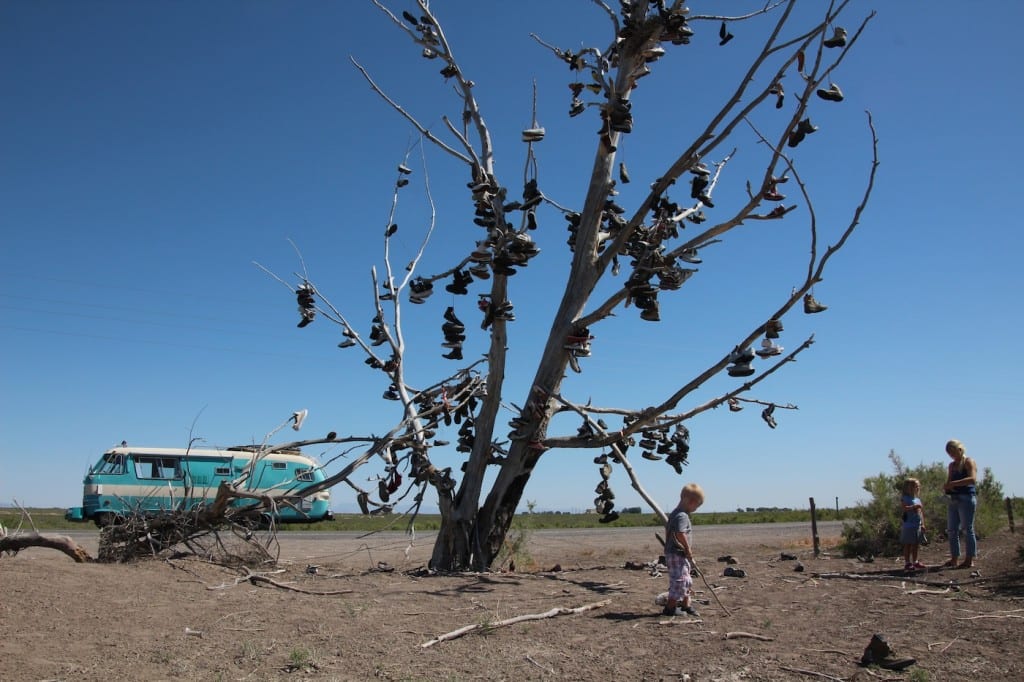
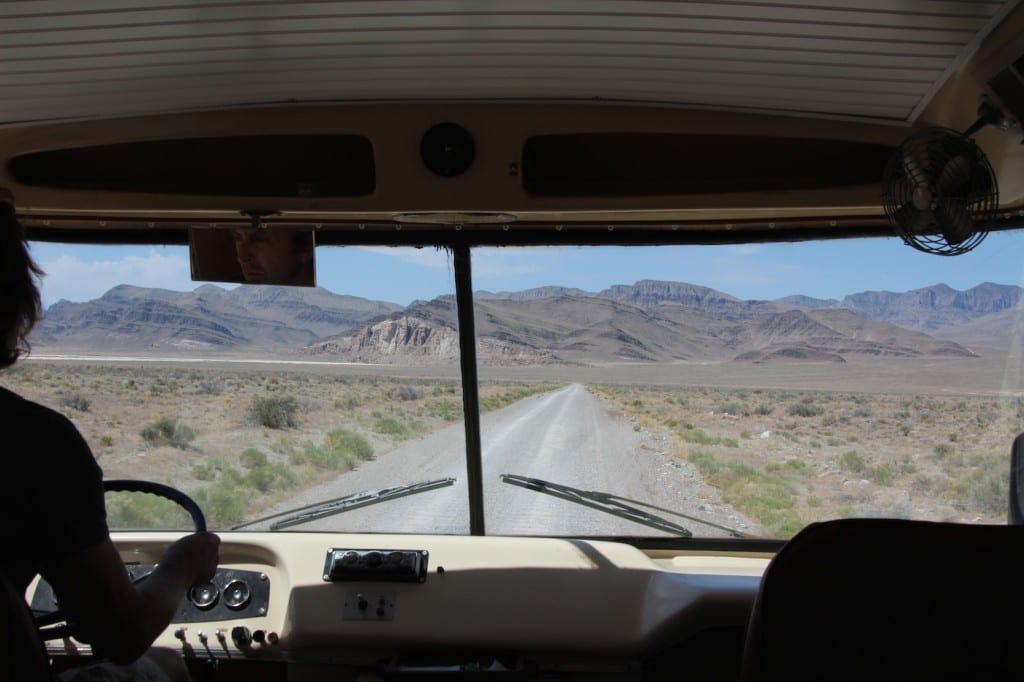
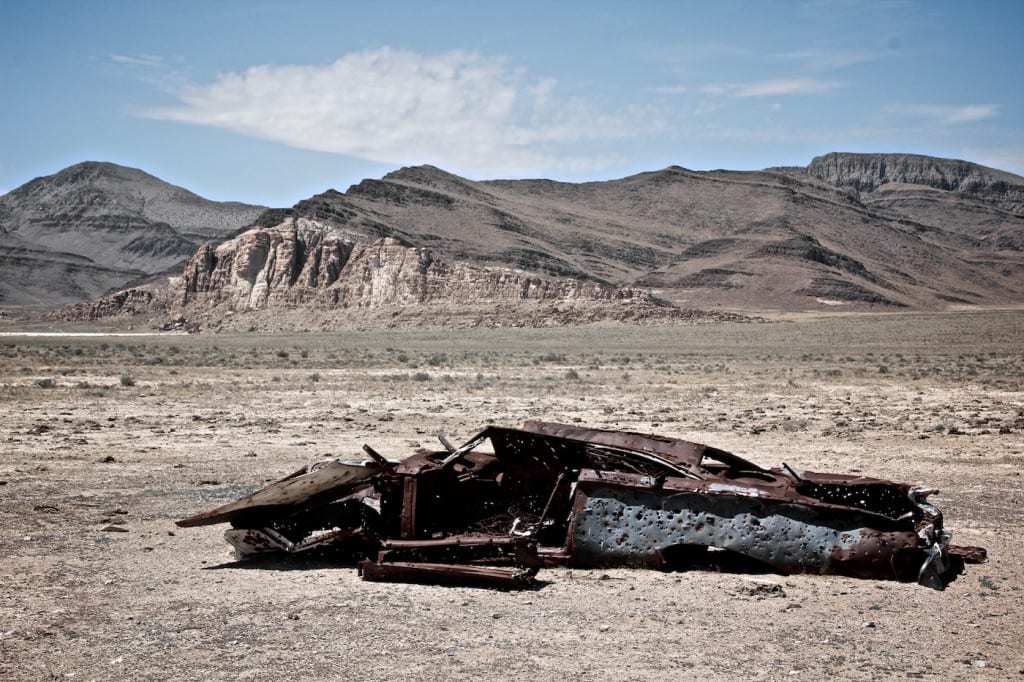
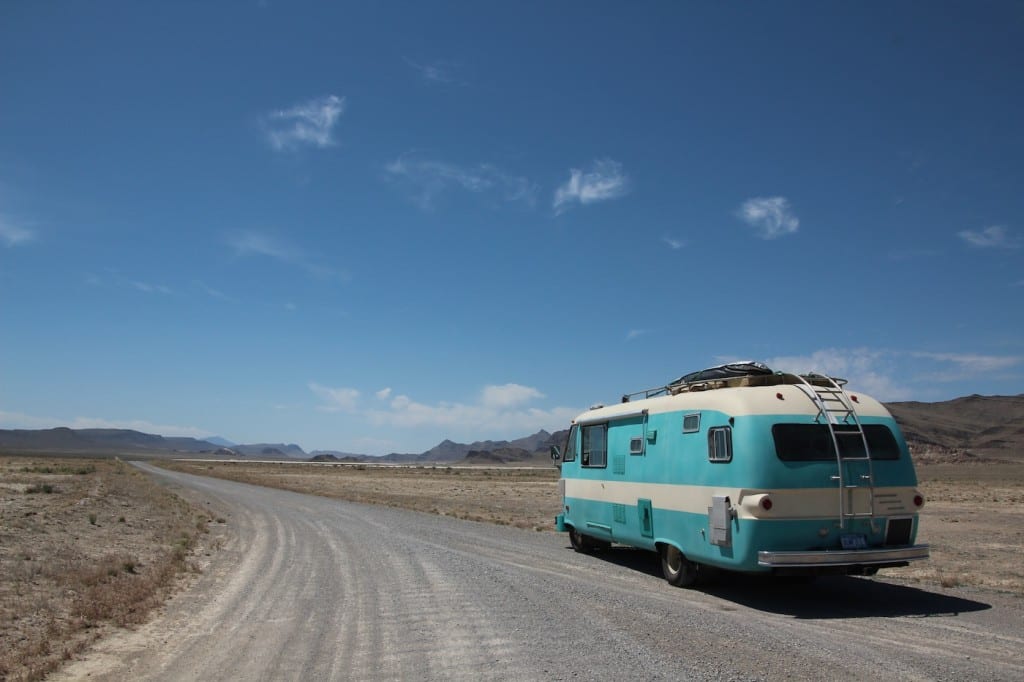
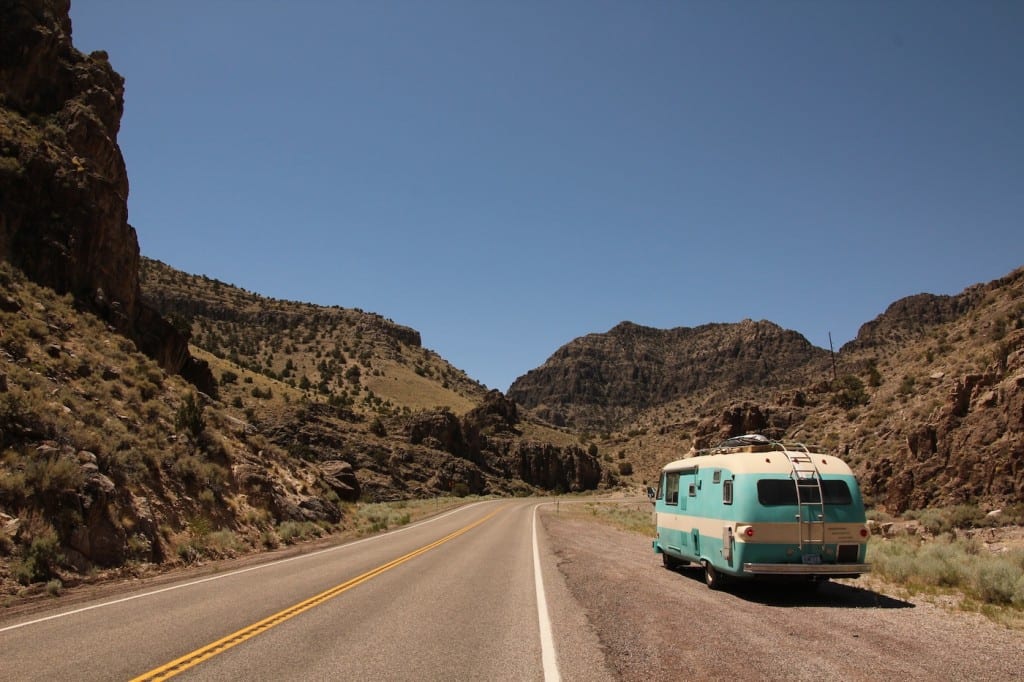
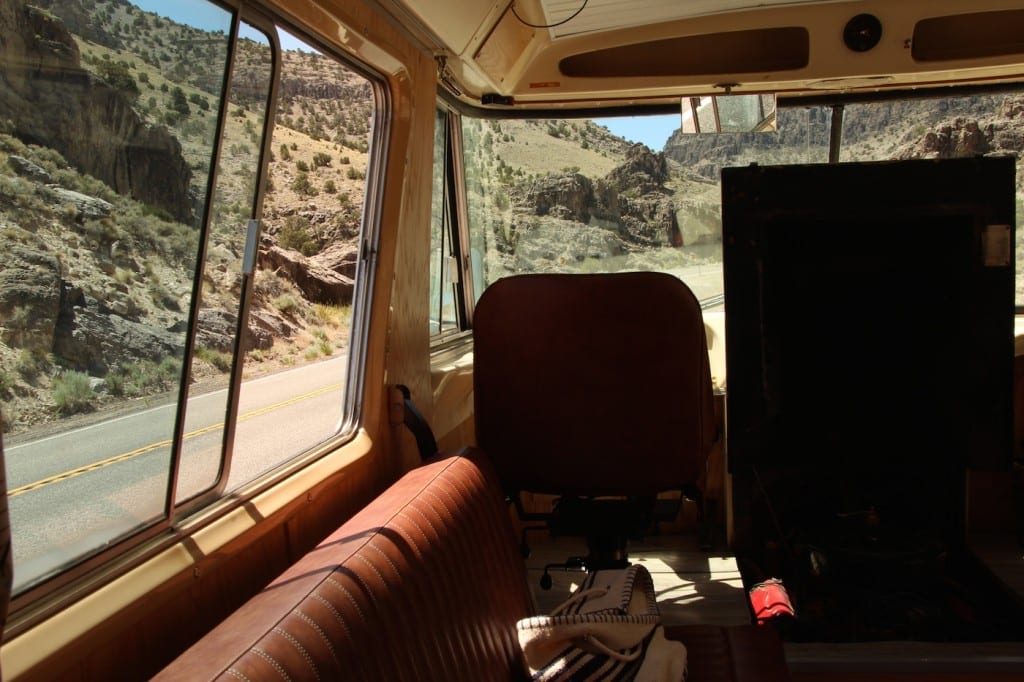
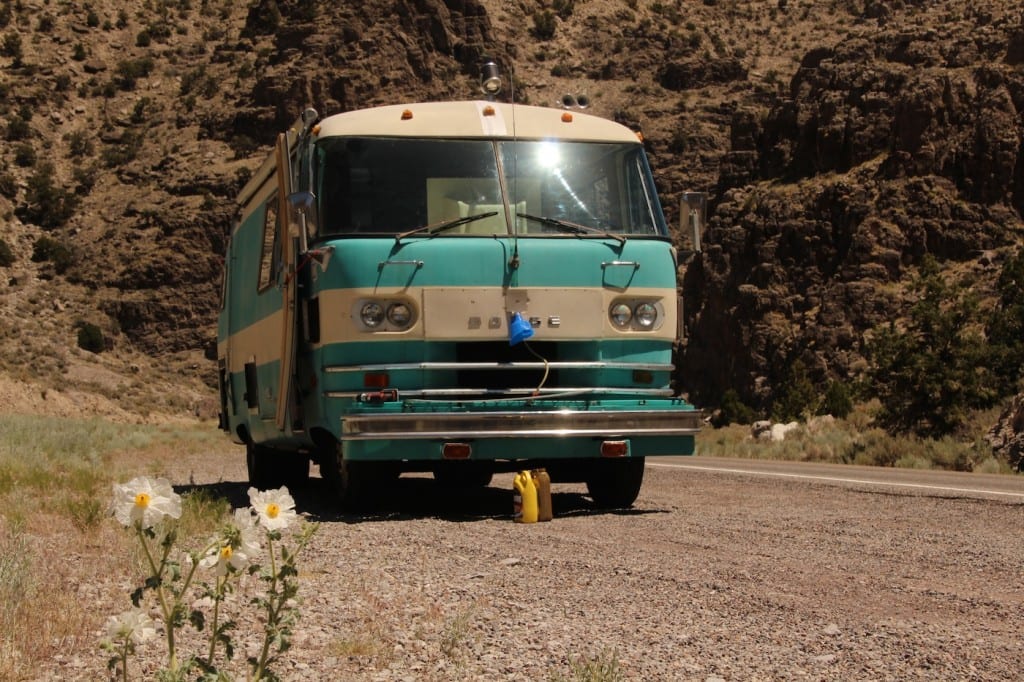
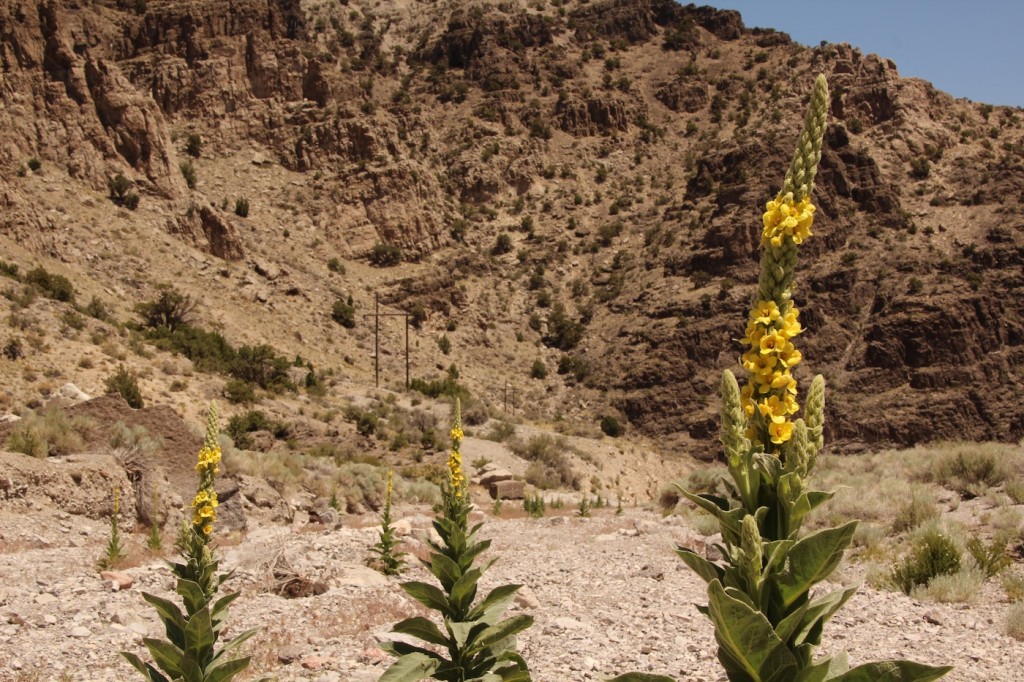
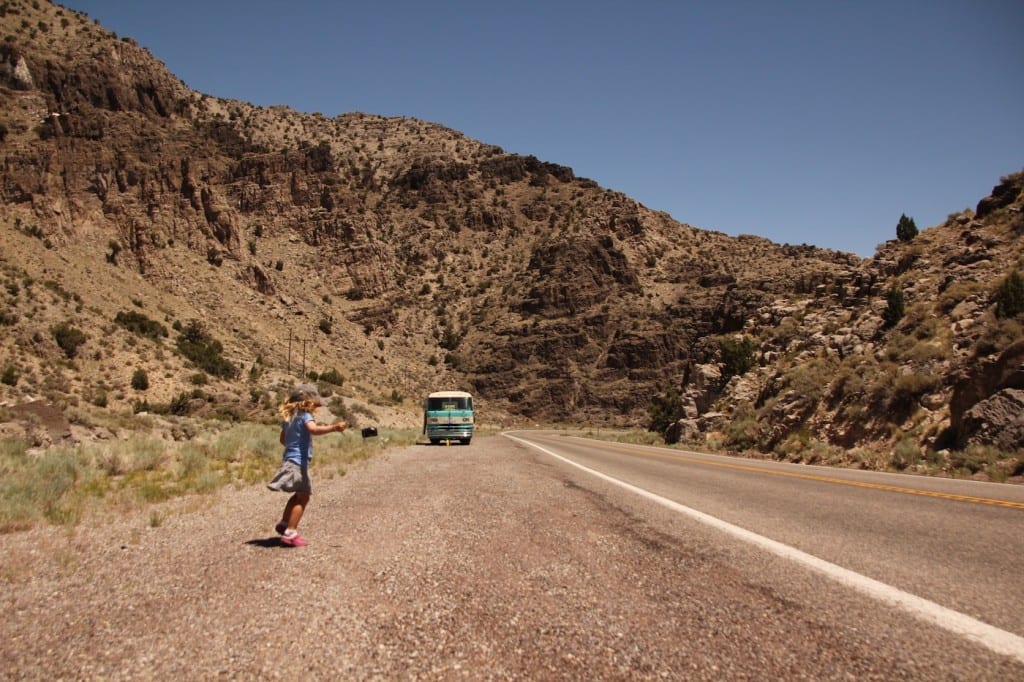
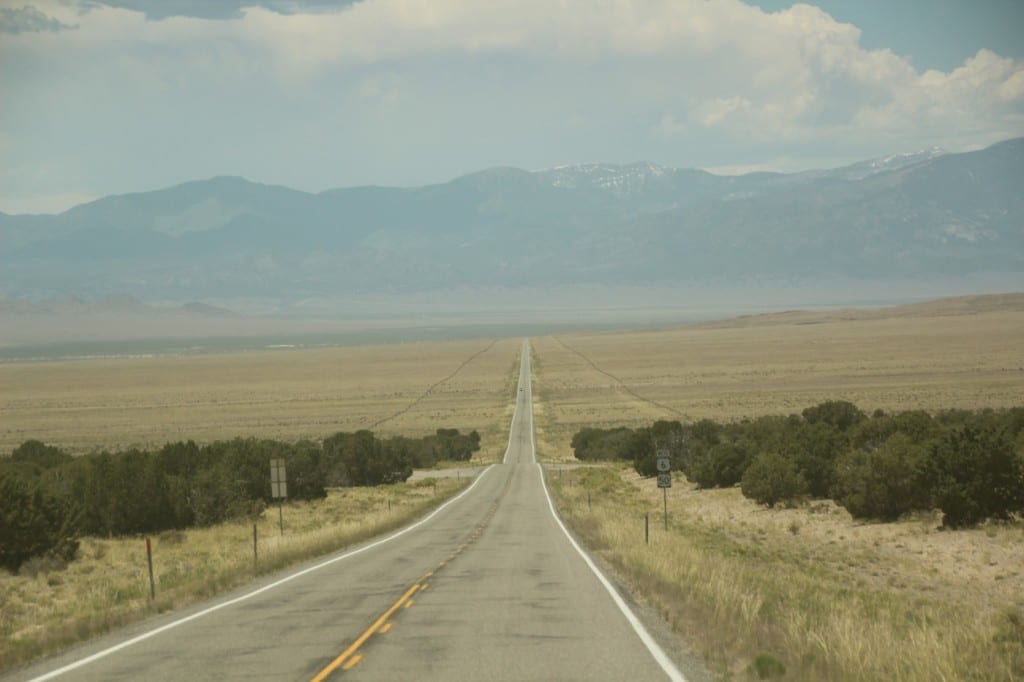

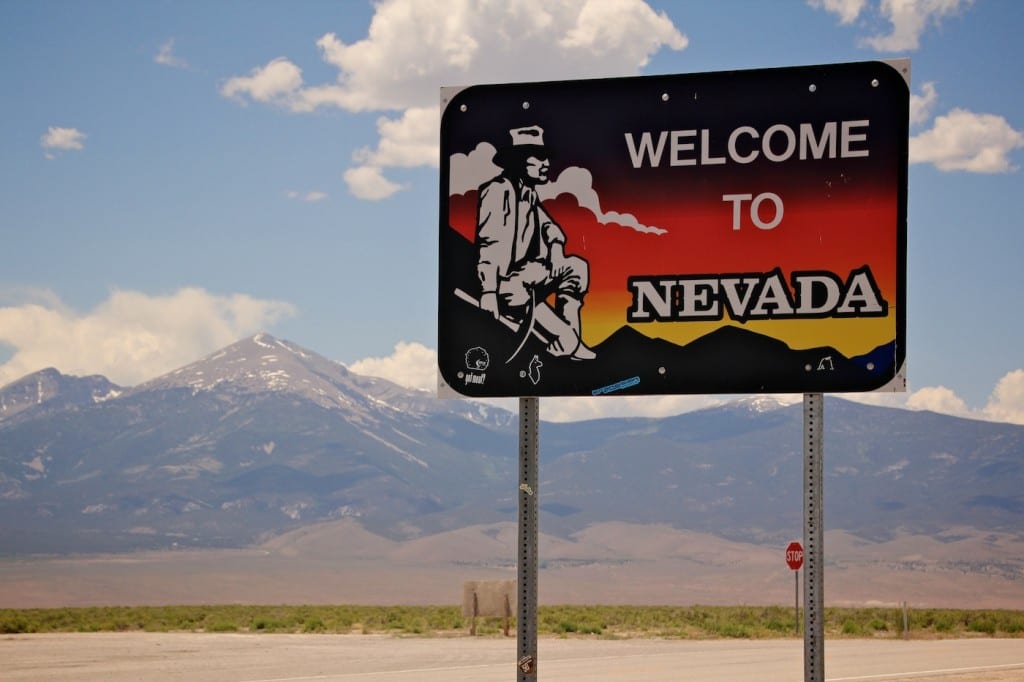
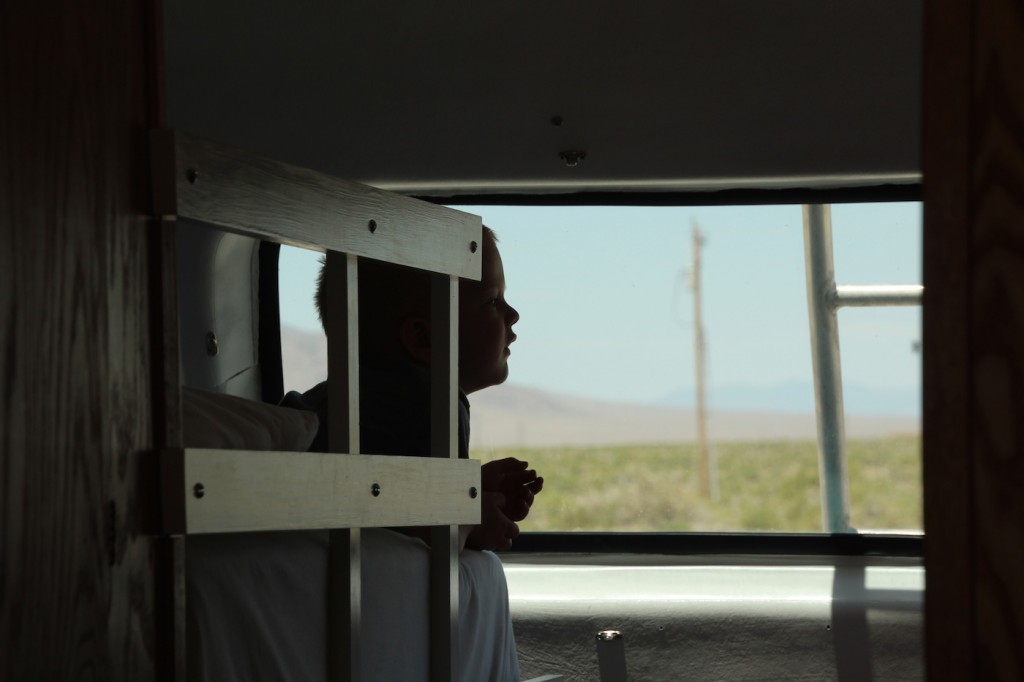
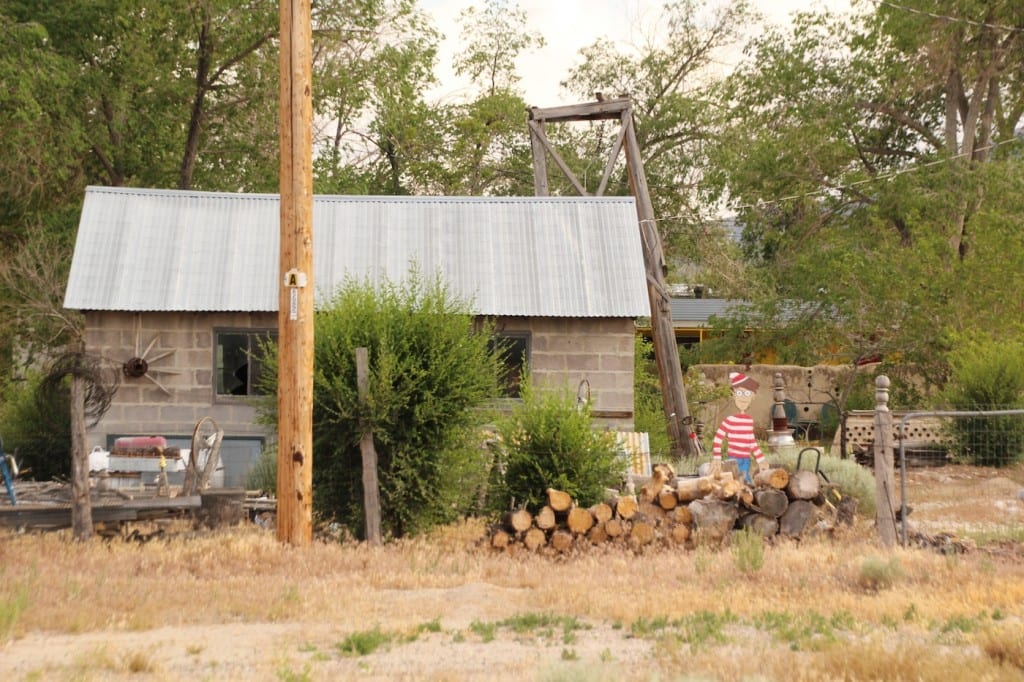
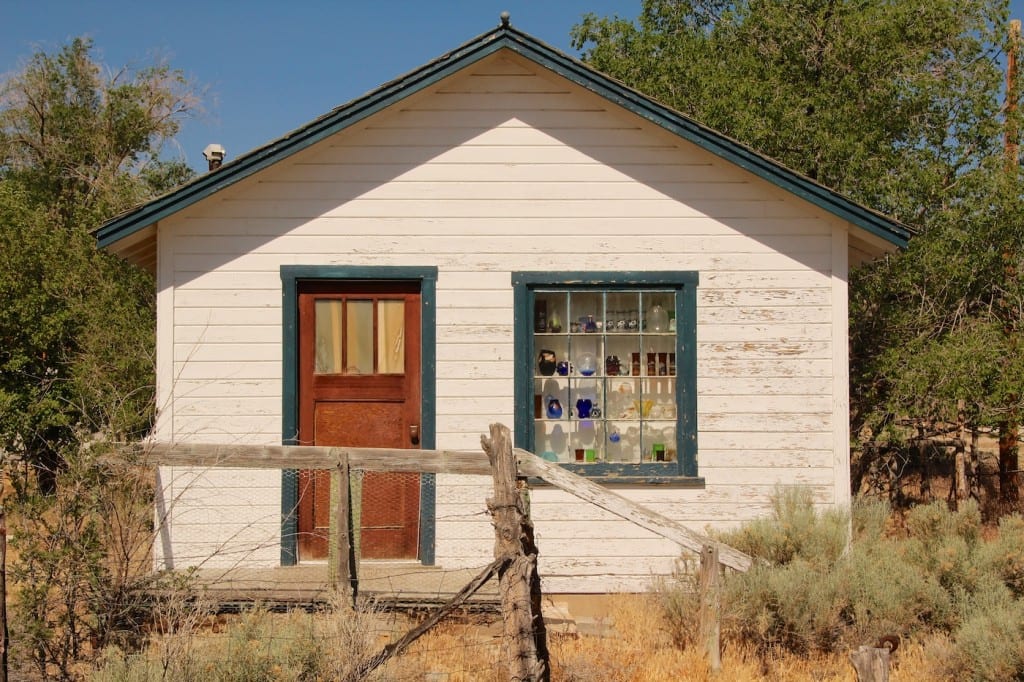
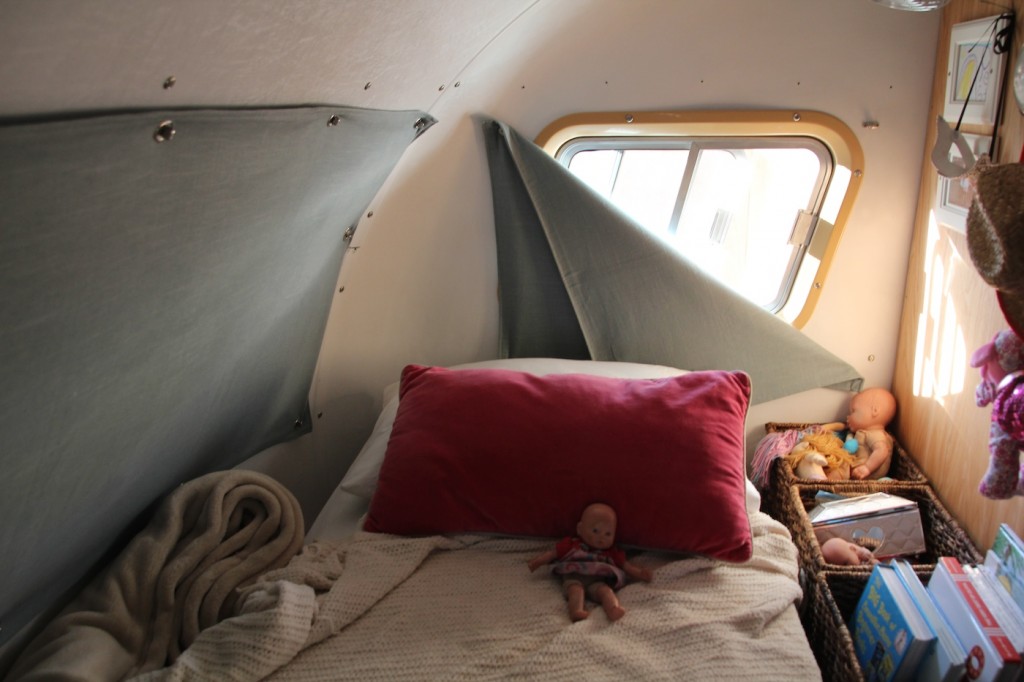
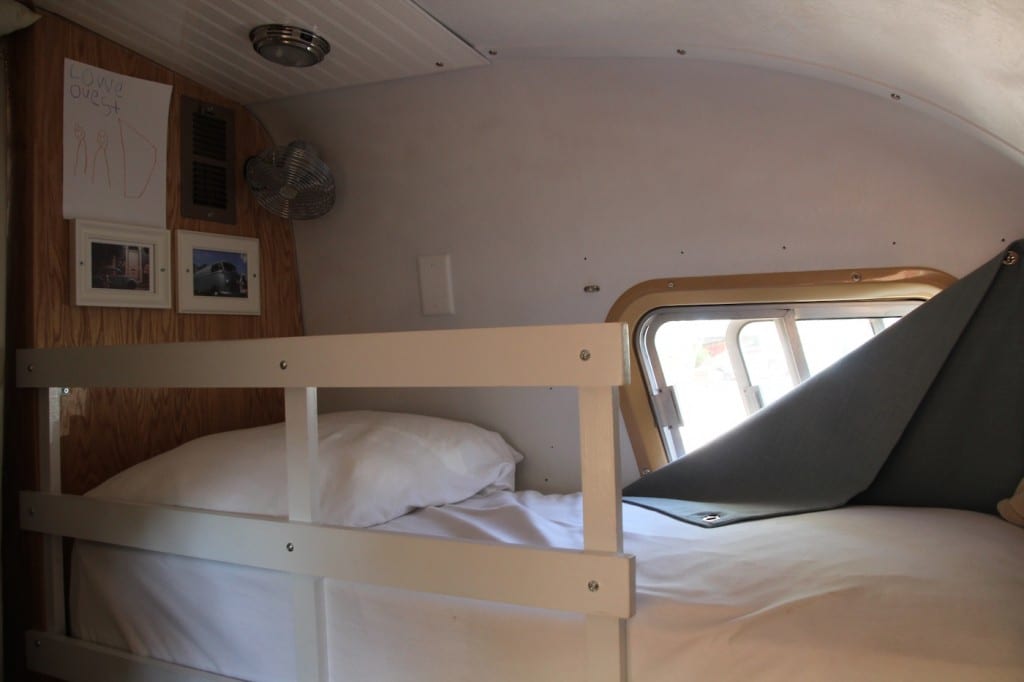
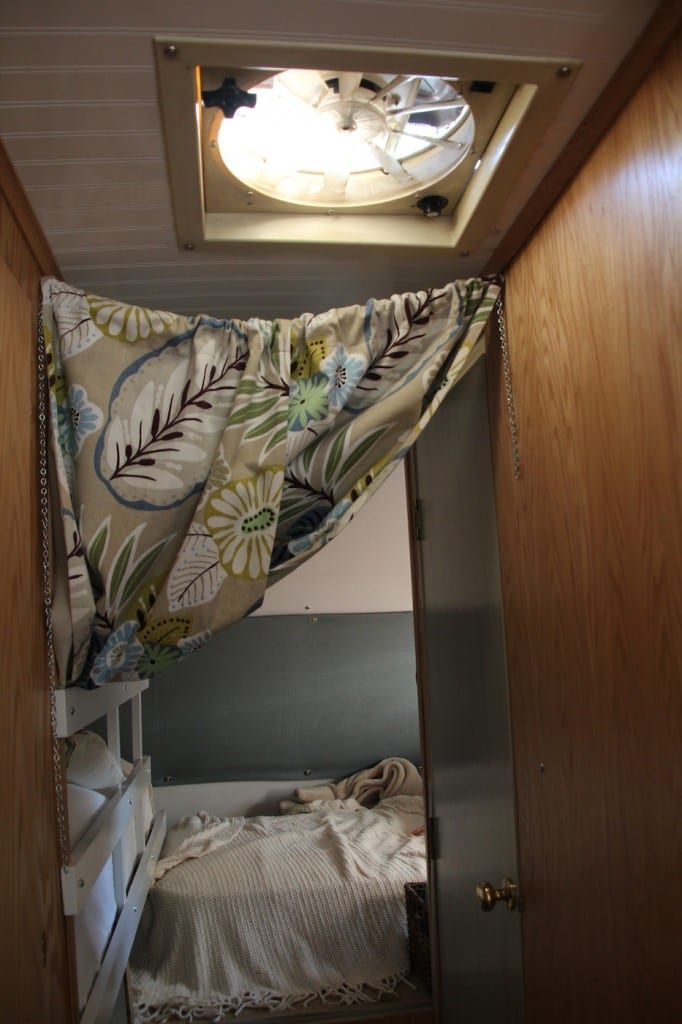

32 Comments on “Ely. Ee-lee.”
Maybe, just maybe the reason you are overheating so easily and that you do not have any power to pull hills is that your distributor setting is too retarded. It would not hurt to try advancing it a couple of clicks. Loosen the small bolt that holds the distributor in place and turn the unit gently in the direction of the vacuum advance. If the engine pings upon acceleration you have turned it too much. A fresh radiator cap of the correct pressure is always a good idea and a fresh overflow bottle even of the white plastic variety should work. And the transmission of course should not be slipping or that will surely cause the engine to heat up. Air filter also has to be clear and clean for best breathing.
Yeah, I’ve thought about the timing for a while. Maybe I’ll just give that a try and see what happens.
Quest needs a skateboard, but not just any skateboard,a real Penny skateboard.
Every time she sees a skateboard she asks us for one. She’ll get one eventually.
I bought one for my daughter, admittedly older, and she loves it and I enjoy watching how good she has become on it, better than me!
No, she needs a pogo stick.
Pat, does the cooling fan have a clutch on it? If it does, maybe it is not locking up when it gets hot? I have seen windshield washer pumps
made to spray on the radiator. I do agree with the timing and radiator cap advice too.
I don’t know diddly about cooling fans. Radiator cap is brand new.
Glad you made it to Nevada! If you keep coming west on 50, there are a lot of natural hot springs along the way. Enjoy our beautiful state!!
Love the shoe tree, we have come across a number of these in the outback of Australia. Even found a thong (flip-flop) tree up on Cape York, the pointy top of Australia.
Really loving your trip. BTW, today we became owners of a Lightwave 38 catamaran. We will start our adventures next April or so, but will limit it to Australia and the South and North Pacific.
Rigging the windshield washer to spray on the radiator is brilliant! Driving my ’66 GTO home from college years ago, I was carrying a garden sprayer, I’d stop, cool down with sprayer with it running until I could open the radiator and add coolant. I finally bought some extra hose and ducktape, and viola!, remote sprayer cooling, no stopping! (It was a convertible, so top down, heater on full blast, and a stick holding the gas pedal down, so hot down there I rode with my feet on the dash!)
Australia had a bigger impact on you than I thought… Water pissing from a radiator only happens downunder. keep livin ur dreams guys n girls.
Patrick,
Your radiator fan should supply enough air to cool the engine, if the clutch is operating correctly. Have you checked to see if there is an electric fan replacement kit? The electric fan run off a thermostat would probably be the solution.
Cheers,
Will Museler
I would consider adding an electric cooling fan on the the outside of the radiator…they come in all sizes and are easy to install…just make sure when you connect the wires it is actually pushing air in the right direction. The fans usually come with plastic tabs that mount directly on the radiator, get a relay and a switch and wire accordingly…I think you will find it effective..
I think you guys are awesome…your kids are very lucky.
Pat;
While water is good, you need to carry it. Spark advance is good, but one also thing you may try is those evil automotive stores sell electric radiator cooling kits with either an auto or manual switch, that hook up to your 12V system. You can also get a transmission oil cooler too.
Keep Have Fun!
I see that you guys found Waldo…..congrats….LOL!!!
Defiantly need the addition of an electric cooling fan. With all that overheating it can’t be good for the transmission as there is an area in the radiator for cooling the trans, quickest way to kill an automatic transmission is to overheat it.
Pat, not to blow up your page but I think timing might well be your issue as well but the opposite of that stated. Retarded timing is more likely to be the cause of your overheating IMO. This is even more likely at altitude. At altitude your carburetor is already running too rich but you probably don’t want to mess with that for short stays at altitude. This problem would be exacerbated if you are still running the high octane that you were talking about before. (high octane is harder to ignite and burns longer). If your timing is retarded the spark comes later, high octane fuel ignites slower and burns longer. The fuel and all your power chase the piston down instead of driving it down causing heat that doesn’t translate into power that also doesn’t get evacuated fully. If you don’t have a gun, advance the timing by rotating the distributor until you get your highest idle and then back it off 5 degrees and you should be close (I don’t know if you are running electronic or points). You should make a lot more power and run cooler. If you get any pinging noise under power, stop and retard a couple of deg. Make sure to reset it when you drop back down in altitude or it will cause you trouble too. My 2c
Checking the fan clutch was good advice too.
Have to agree with Rastaman. I added an electric cooling fan on the outside of a radiator on an old Ford pickup I used to have. Worked wonders and was easy to install. I also frequently rely on the old standby: remove the thermostat altogether when it really hot out. We started to overheat in southern AZ last summer. Turns out the old thermo wasn’t even opening. But I removed it altogether and it dropped from the overheating mark on the gauge to barely above COLD. Then, once we reached a store, I replaced the thermo with the lowest temperature one they had that fit.
BTW, I’d be really surprised to see a 1966 vehicle with a clutch-operated cooling fan.
Pat,
I haven’t read every comment so forgive me if this has been mentioned. Have you tried running the heater while climbing hills? I’m not a mechanic so I have no idea if this would help in your case or not but whenever I do I see a noticeable drop in the engine temperature. I’ve used this approach to cooling the engine on a few occasions. Opened the windows to help cool the cab and cranked the heater to max to cool the engine.
Travis
Just to pile on because having followed you guys for years I know how much you love unsolicited advice. Depending on the model of distributor (and engine) it has either a vacuum or mechanical advance that changes the timing depending on engine load. If it is vacuum make sure you are getting vacuum to the line attached to the distributor when the engine rev’s and de-rev’s. If it is mechanical it is a set of spring tensioned weights inside the distributor that when old get gummy and the springs lose tension. Getting a distributor rebuilt is not very expensive, or just replace it with a modern electrical one.
Love your guys spirit and thanks for the great blog!
Love your blog. I’ll thow in my mechanical 2 cents. There’s not clutch on a 50 year old mopar fan. It also probably doesn’t have very effective shrouding, which is why an electric fan kit would help. Better shrouding. Converting to electronic ignition may help with overheating. Your favorite store Napa probably has a kit for $150. Unless it’s pinging, it’s not so much the timing setting as it is the timing advance that might contribute the the overheating. Your old centrifugal or vacuum advance is not very precise. Do not remove the thermostat. It will appear cooler at the temp sensor but it could be hotter in more critcal areas. Removing the thermo messes with the flow velocities in the cooling passges. Faster flow does not always result in better heat transfer.
Berenstain bears. Oh what a classic kiddies book. I Love it. 🙂
On June 7th I offered some suggestions related to the overheating problem so I won’t bore you by repeating them here. If you can turn the fan with the engine off it is a “clutch” fan, designed to lock up at a certain temperature. When the engine is really hot, the fan should not slip with the engine off.
Suggest you be very careful about changing the timing without a timing light. Too much advance can lead to pre-ignition, burning a piston or valves. Have a shop check it for you.
I had a case where bugs had completely blocked the spaces between the radiator & transmission cooler. Maybe high pressure water spray from both sides of the radiators might clear out any debris. As mentioned, a bigger fan or an electric pusher fan in front of the radiator might help?
Paul Thomas
Oh Pat….one more thing to check, (as if the list is not long enough) You may want to check the condition of the radiator. One that age with limited use may have blocked or restricted tubes. A quick way to check for restriction, is to pull off the lower hose, the coolant should gush out (with cap removed) You can catch the old coolant if you want. BTW those older radiators can be cleaned out at a shop.
good luck
Good point, In my other post I said “assuming the radiator is flowing properly” If that is the original radiator, there is the possibility of developing deposits in the core. Instead of just having it cleaned out by flushing the shop can take off the top & bottom tanks and “rod it out”. Better yet, if the existing core is 3 or 4 row a larger core can probably be installed. A 318 is fairly small for that size vehicle. It is no doubt under a lot of stress on long climbs, creating a big demand on the cooling system. Continued heating will eventually take its toll on the engine.
Paul Thomas
Hy,
old engineering was to put huge radiators on poorly design internal engine cooling pipes resulting in overheating problems.If you want to keep driving this nice bus for a longer time you need better engine and transmission cooling. Now you only have the engine and cannot rely on sails and wind any more….
here is what i did on my Dodge :
bought on ebay 2 x14inch slim radiators push pull.
http://www.ebay.ca/itm/2x-Universal-14-Black-1500-CFM-12V-Electric-Cooling-Slim-Push-Pull-Radiator-Fan-/301208935742?pt=Motors_Car_Truck_Parts_Accessories&hash=item4621739d3e&vxp=mtr&_uhb=1
cut the front bumper 6×16 inches which was in front of the radiators
it wasn’t been said here but if you transmission overheats since the transmission radiator is in front of the engine radiator( on my Dodge it is) everything else will overheat. stick a 17$ water temperature gauge on the hot line of the transmission just to keep transmission temp in check.
this could be also a good bet if it fits you Dodge model http://www.ebay.com/itm/ALUMINUM-EXTERNAL-TRANSMISSION-FLUID-OIL-COOLER-WITH-10-ELECTRIC-FAN-TOWING-NEW-/140975977688?pt=Motors_Car_Truck_Parts_Accessories&hash=item20d2d2b4d8&vxp=mtr
also lubeguard
http://www.lubegard.com/~/C-112/LUBEGARD+Automatic+Transmission+Fluid+Protectant
some photos here:
http://globalcamper.blogspot.ca/p/4×4-dodge-ram-camper.html
funny things about speed : sailing at 8 knots the snailhull is considered fast. 12 knots is a blast…
have safe travels
Mihai
Love that you found Waldo. The rest will fall into place. Happy travels dear Bums!
we’ve been to that shoe tree too and we LOVED highway 50 in Nevada. one of our favorite routes!
I had the radiator on my Dodge based Winnebago Class A RV cleaned or recored each ten years, because that was how long it would cool properly; i.e. never get hot enough to need ANY coolant added from year to year. The radiators on class A motorhomes were most always much larger than the ones for pickups or cars; and often hard to find and expensive. The radiator for the 413 engine in my 72 Winnebago weighed 65 pounds, while the radiator for the 413 engine in the Chrysler 300’s weighed 40 lbs. The water pumps were also different from those on ‘light duty’ vehicles, having more vanes than those for the cars, though on the outside they look the same. If someone replaced your water pump and/or radiator with one that was sized for a car – it would work okay in cool weather and flat areas, but not in the mountains. And I still think there would have been a viscous drive fan clutch between the water pump drive pulley and the fan itself. They werent electric, and they dont ever suddenly die; they lose the viscous urge little by little. The radiator fans were commonly also unique to the motorhome chassis. Mine had seven fat blades instead of the 5 skinny blades on the pickups. With A new fan clutch, a clean RV appropriate radiator, a new thermostat (I like the Stant superstat type myself), and the OEM type of radiator fan & water pump, I would expect your Travco to be able to climb up to Leadville CO in August, without losing a drop of coolant, or needing to be cooled down at the side of the road.
The rear axle ratio on my 22 ft Winnebago was a 4.56. I know they also had a 4.88 ratio, which I think was used with the 318 engines on the longer chassis like a 27 Travco would have had. These ratios may have been different for the older RVs like a 66 Travco, but probably not much. Knowing the axle ratio you can measure the diameter of the tires and figure the driveshaft rpm at a given highway speed; then add a couple of hundred rpm for the losses in the torque converter to get the typical engine speed – on level ground. You would figure much greater torque converter loss for lower vehicle speed on up-hills. (So you might want to pull over to let the transmission fluid cool – but the engine should not need it). The ratios of the 727 transmissions were 2.45 to 1 in first gear, 1.45 to 1 in second, and of course 1 to 1 on high gear. I had added a tachometer on my RV; and in first gear ascending to Loveland Pass, the engine was turning about 4000 rpm (throttle wide open) in 1st gear, going 25 mph. So there would have been a little over 1000 rpm of loss in the torque converter. While it ran warm, (this was in hot weather) we never needed to pull over to let it cool, and it didnt use any coolant at all., nor any other fluids except gasoline! It took us a couple of hours at full throttle to get over the pass, starting in Parachute CO.
Later I added an auxillary trans fluid cooler when I was planning to tow a car trailer behind us, and thanks to the generous frontage of the Winnebago, I was able to mount that cooler where it had its own airflow supply, and was not in front of the radiator at all. For more driving in the Rockies though, it should have had its own electric fan – as you dont get much cooling airflow at 25mph. My aux cooler was added in series with and -downstream- from the one inside the bottom of the radiator; because in winter weather, it is entirely possible to have the transmission fluid be too cool!
Another thing that can lead to overheating on old V8’s is if there is an exhaust manifold valve to pass exhaust gases from one exhaust manifold, through the intake manifold, to the other exhaust manifold. This is to warm up the area under the carburetor on a cold engine for better vaporization. Those valves famously get rusted and stuck – in the position where they are making the intake manifold (and its cooling water passages) far too hot. The intake manifolds on the heavy duty engines like in a motorhome may also be different from what you would find in a pickup or a car.
I dont think there is any danger of the vacuum advance being the reason for overheating; it might make your mpg miserable though! (my joke!) The centrifugal advance needs to work right too, or you wont have decent power at higher rpm. Be sure to lube the cent. advance ‘shaft’ inside the distributor shaft (under the rotor) with a drop of oil every 5k to 10k miles – or endure goofy problems with timing being off when the mechanism gets sticky and doesnt fully return to its low rpm ‘retarded’ position or open to its advanced position; the difference can be 15 degrees of spark advance.
I dont know if you are going to have much in the way of ‘pinging’ with that 318 if its running okay & you dont have a vacuum leak. The comp ratio for the 318-3 was 7.8 to 1. For my 413 it was 7.5 to 1. I never have heard it ping. And regular 87 octane was the fuel called for. (Back then it would have been leaded fuel of course). By contrast with other versions of the 413: In the versions used in the Chrysler 300J cars, they used as high as an 11 to 1 compression ratio, and called for “Sunoco 260” gasoline; which in the late fifties had an octane rating of 102.
I continue to enjoy your daily news and pictures.